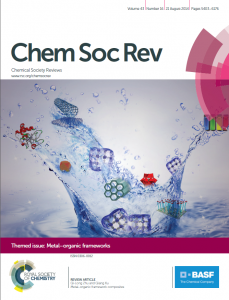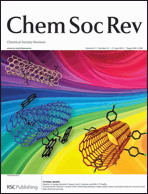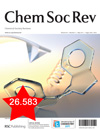It is with great pleasure that we announce that Chem Soc Rev’s Impact factor has risen to 34.09 – its highest ever – according to the latest citation data released by Thomson Reuters in its 2015 Journal Citation Reports®.
With this, we maintain our position as the second top journal in multidisciplinary chemistry – thank you to all of our authors, referees, readers, Associate Editors, and Editorial and Advisory Board members for being an essential part of Chem Soc Rev’s continuing success.
We are proud to be the home of high impact, succinct and reader-friendly reviews from across the breadth of the chemical sciences, with a truly international authorship and a global audience.
And with our Immediacy index at an all-time high of 9.592 – higher than those of our key competitors, and an impressive 26% increase from last year – we are on track to make an even bigger impact in years to come.
Read our most highly cited reviews below.
Tutorial reviews
Recent advances in semiconductors for photocatalytic and photoelectrochemical water splitting
Takashi Hisatomi, Jun Kubota and Kazunari Domen
Chem. Soc. Rev., 2014, 43, 7520-7535
DOI: 10.1039/C3CS60378D, Tutorial Review
From themed collection Catalysis for Production of Renewable Energy
Recent progress in the development of near-infrared fluorescent probes for bioimaging applications
Zhiqian Guo, Sookil Park, Juyoung Yoon and Injae Shin
Chem. Soc. Rev., 2014, 43, 16-29
DOI: 10.1039/C3CS60271K, Tutorial Review
How to produce white light in a single-phase host?
Mengmeng Shang, Chunxia Li and Jun Lin
Chem. Soc. Rev., 2014, 43, 1372-1386
DOI: 10.1039/C3CS60314H, Tutorial Review
Review articles
Luminescent metal–organic frameworks for chemical sensing and explosive detection
Zhichao Hu, Benjamin J. Deibert and Jing Li
Chem. Soc. Rev., 2014, 43, 5815-5840
DOI: 10.1039/C4CS00010B, Review Article
From themed collection Metal Organic Frameworks (MOFs)
Two-dimensional transition metal dichalcogenide nanosheet-based composites
Chaoliang Tan and Hua Zhang
Chem. Soc. Rev., 2015, 44, 2713-2731
DOI: 10.1039/C4CS00182F, Review Article
From themed collection 2D Transition Metal Dichalcogenide (TMD) Nanosheets
Earth-abundant cocatalysts for semiconductor-based photocatalytic water splitting
Jingrun Ran, Jun Zhang, Jiaguo Yu, Mietek Jaroniec and Shi Zhang Qiao
Chem. Soc. Rev., 2014, 43, 7787-7812
DOI: 10.1039/C3CS60425J, Review Article
From themed collection Catalysis for Production of Renewable Energy
Applications of metal–organic frameworks in heterogeneous supramolecular catalysis
Jiewei Liu, Lianfen Chen, Hao Cui, Jianyong Zhang, Li Zhang and Cheng-Yong Su
Chem. Soc. Rev., 2014, 43, 6011-6061
DOI: 10.1039/C4CS00094C, Review Article
From themed collection Metal Organic Frameworks (MOFs)
Chem Soc Rev uses a formal online submission system for review proposals, incorporated into our existing online system. Please upload your completed proposal form online, and read our Author Guidelines for details.
Read more about the Royal Society of Chemistry’s journals 2015 impact factors
*The Impact factor provides an indication of the average number of citations per paper. Produced annually, Impact factors are calculated by dividing the number of citations in a year to articles published in the preceding two years, by the number of citeable articles published in the preceding two years. The journal Immediacy index indicates how quickly articles in a journal are cited, and is calculated by dividing the number of citations to articles published in a given year by the number of articles published in that year. Data based on 2015 Journal Citation Reports®, (Thomson Reuters, 2016).


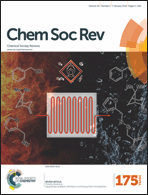









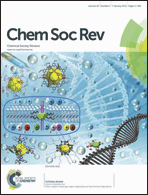 We sincerely thank you – our authors, referees, Associate Editors, and Editorial and Advisory Board members – for all your valuable contributions and continued support which have brought the journal to where it is now. With a truly international authorship publishing accessible and reader-friendly articles, Chem Soc Rev remains as
We sincerely thank you – our authors, referees, Associate Editors, and Editorial and Advisory Board members – for all your valuable contributions and continued support which have brought the journal to where it is now. With a truly international authorship publishing accessible and reader-friendly articles, Chem Soc Rev remains as 